Deer hunting is legal in the US, according to the federal hunting laws being implemented by the US Department of Fish and Wildlife Service. Nevertheless, there are some strict rules and regulations that hunters should follow. On the other hand, this herbivore game animal is now a major pest in farms, parks, gardens, and backyards.
Can you shoot a deer on your property? You can shoot a deer on your property. However, it depends on where you live. In some states, landowners and their immediate family members are allowed to shoot a deer on their property. However, the land should be larger than 10 acres and utilized solely for agricultural purposes.
Some states also allow landowners to hunt deer on their property without getting a license. They are also allowed to use archery, crossbow, muzzleloader, or firearms. However, you may want to consider choosing the most appropriate weapon if you have neighbors. And again, laws may be different from state to state.

In this article, we’ll examine the distinctions between several species of deer and how rare they are. This article will also explain the laws and regulations that apply when shooting a deer, as well as various methods for permanently eliminating them without killing them.
Why Should You Keep Deer From Coming to Your House?
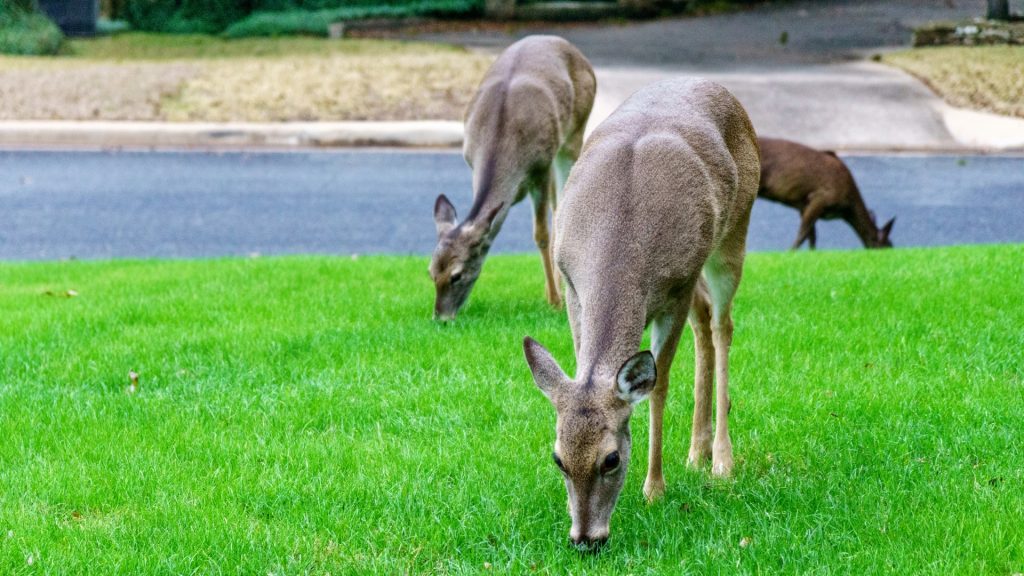
Being wild animals, deer will search for food, water, and shelter. If they sense that your house has everything they need, they will not hesitate to visit it.
Deer will enjoy staying in your area if you have a large farm, a beautiful garden, or a backyard full of plants. While deer are around, they can cause a lot of trouble.
Aside from eating your plants, a herd (a group of deer) will also dig your garden, structures, and your entire property. They will cause more damage during the breeding season (mostly in October) or while the does (a female deer) are raising their kids.
In short, deer is a nuisance for your yard. They are also persistent even if you harass them.
Related: Why Do Deer Sleep in My Yard? | Information & Facts
Is It Illegal to Shoot an Albino Deer?
It is illegal to shoot an albino deer. However, it depends on where you live. In some states, the law changes from time to time.
For example, the shooting of albino deer used to be illegal in Michigan but became legal in 2008. So far, the states where the shooting of albino deer is prohibited include Illinois, Iowa, Tennessee, and Wisconsin.
How Rare Is an Albino Deer?
Albino deer are considered extremely rare. Several studies have different estimated figures in terms of the chances of albino deer. Naturalist John Bates suggested that it could be 1 out of 20,000. On the other hand, some studies suggested that it could be 1 out of 30,000. This figure may be lower in states where hunting laws do not protect them.
What Is the Difference Between Albino Deer, White Deer, and Piebald Deer?
The terms “albino deer” and “white deer” are usually mistaken for being the same animal. Although, both animals result in different genes that affect different body processes.
They also have different color variations that make people more confusing to describe what they saw. But then, their main difference is the color of their eyes.
Albino Deer
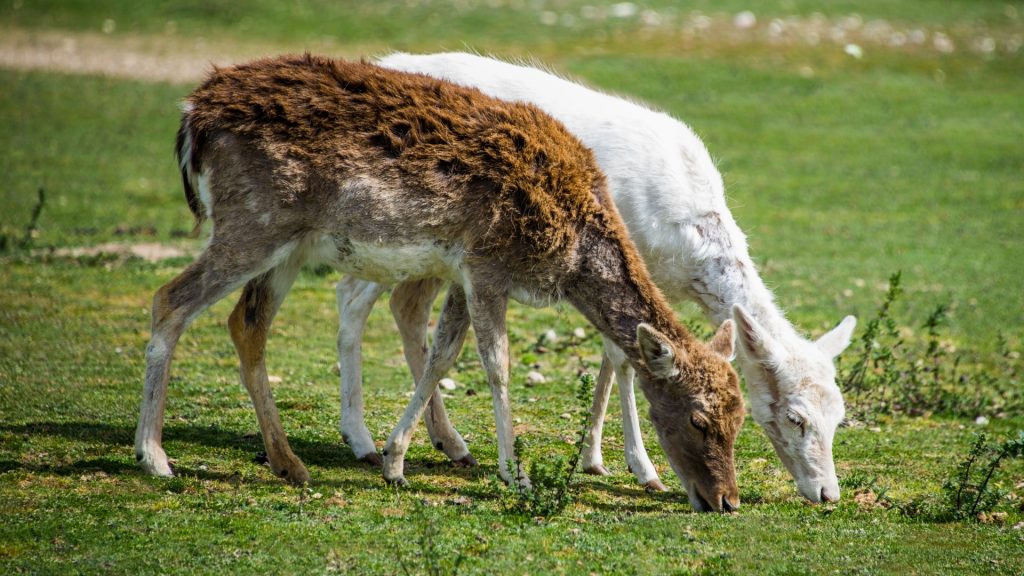
Albino deer typically have blue or pink eyes, which are caused by the blood vessels that appear through the iris. They are also likely to have impaired eyesight because of the lack or absence of melanin, vital in eye development. This congenital condition makes them an easy target, which is presumably why they are so rare.
Albinism, a congenital defect of the skin, also occurs in humans and other animals. Technically, there is no such thing as partial albinism because this condition is caused by a lack of tyrosinase. It is an all-or-nothing condition.
Albino animals are unlikely to survive long. Nonetheless, albino deer have all the other characteristics of a normal deer.
White Deer
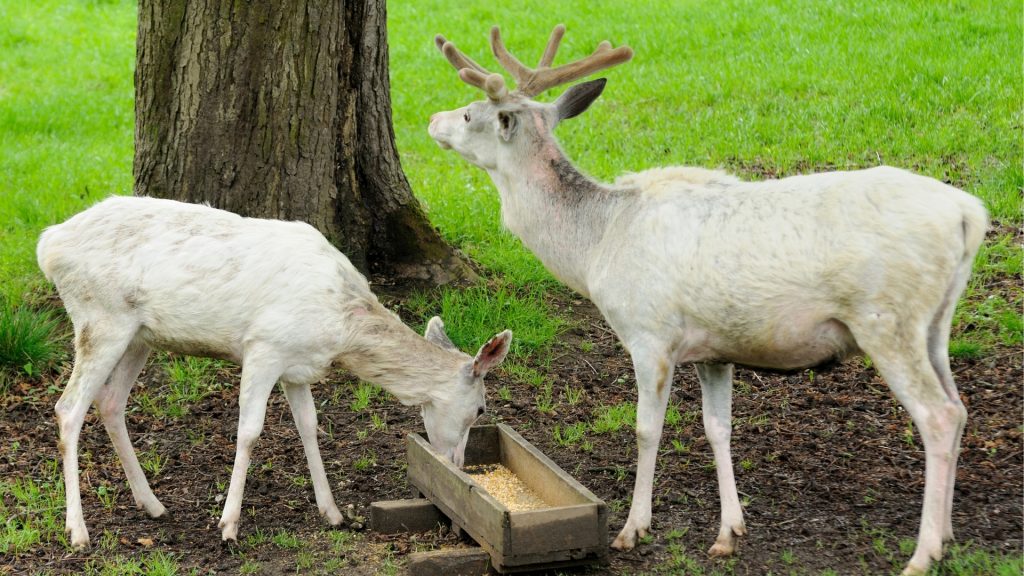
White deer are predominantly white, as their white tails. Also dubbed as the “true albino,” white deer that lack all the color pigment pigmentation have pink eyes and nose.
Meanwhile, white deer that have brown eyes are also called leucistic deer. But unlike albino deer, they are likely to live longer, and they can see well.
Piebald Deer
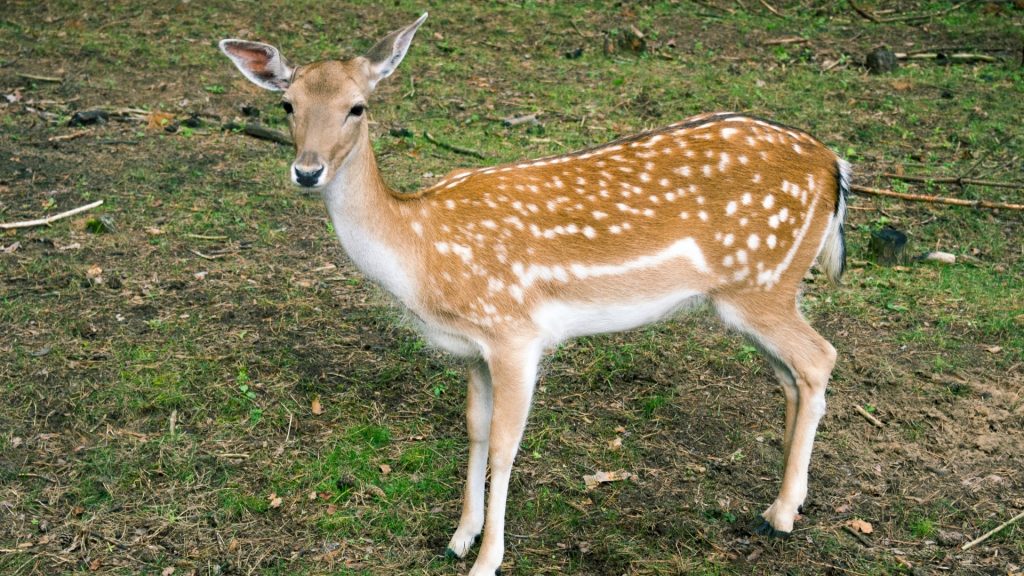
Interestingly, some white deer are all-white while others are half-white and half-brown. These white deer species are called piebalds, and their condition is technically known as partial leucism.
Unfortunately, piebald deer are also rare since they may only be 1 out of 1,000 deer. Nevertheless, almost all of them are healthy and have only a few defects.
When Can You Shoot a Deer Legally?
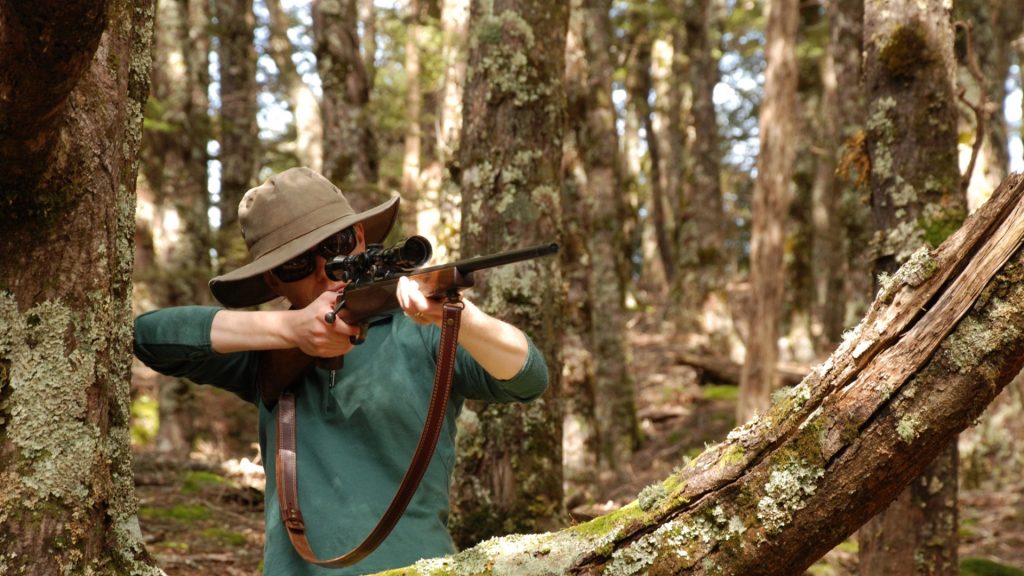
Not all states have the same hunting laws. But in general, you can only shoot a deer during hunting season. The length of the season usually depends on the population and the health of the herd, as well as the number of hunters who will participate in that area.
Hunting deer out of season is considered illegal in almost all 50 states. This out-of-season, also known as a closed season, generally occurs while deer are molting, at the peak of their reproductive activity, or have a low population owing to a lack of food.
Illegal hunting or poaching is punishable by law. Nevertheless, state states may allow deer hunting during close seasons but only in exceptional circumstances.
Can You Shoot a Deer at Night?
You are not permitted to shoot a deer at night since it is extremely risky to shoot in the dark. Aside from the possibility of accidentally shooting someone, you may also fall and injure yourself.
Other wild animals might also be present in the woods. They hate seeing intruders and will attack you. Therefore, you can only shoot deer while the sun is still up.
On the other hand, some hunters use a spotlight so they can see the deer in the dark and shoot them. However, this is also illegal in most states, and violators shall receive the corresponding punishment such as imprisonment or fine or both plus revocation of license. Nevertheless, some states may allow you to hunt other wild animals at night.
What Are the Laws and Regulations When Shooting a Deer?
As previously mentioned, deer hunting laws and regulations may vary from state to state. However, some rules may be common to all states.
Before going into deer hunting, make sure you check the laws on where you will hunt. Nevertheless, the list of some of the general rules and regulations below can serve as your guide.
- It is illegal to shoot a deer on public land unless you have a hunting license issued by the state where you intend to hunt. To get a hunting license, you must first complete a training course provided by the state.
- It is illegal to shoot a deer within 150 yards (450 feet) of any farm, camp, school, playground, commercial or industrial building, or residential area without the occupants’ approval. Chasing, disturbing, taking, and trapping are also prohibited.
- Shooting a deer into a safety zone (150 yards) is illegal, even if you are outside the zone.
- It is illegal to shoot a deer in hospitals, cemeteries, and institutional grounds within the safety zone.
- During hunting, hunters are required to wear orange clothing. Also known as blaze orange and fluorescent hunter orange, this blaze orange prevents the hunter from being mistaken as the game. The size may be different in different states.
- Only rifles, muzzleloaders, handguns, and shotguns no bigger than 10-gauge are permitted for deer hunting. Machine guns and explosives are not allowed.
- It is illegal to shoot a deer from a vehicle of any kind, moving and stationary. Nevertheless, it is legal if you are in private property allowed by the owner.
- It is illegal to have a loaded firearm in any vehicle. However, a loaded magazine is allowed as long as it is not attached to the firearm.
- Shooting a deer on a public road or right-of-way that is open to the public for travel is unlawful.
- It is illegal to shoot a deer across a road unless the line of fire will pose risk to road users.
- Feeding the deer, as well as using deer decoys, electronic calling, and bait is illegal. However, some states allow it.
- There is no law against drinking while hunting. However, it is illegal to discharge a firearm while under the influence of alcohol.
- If you are a landowner and the deer is on your property, it is legal to shoot it even if you do not have a firearms hunting license. However, there are still some restrictions depending on the state law.
How Do You Get Rid of Deer Permanently Without Killing Them?
Deer usually feed at night and remain awake and busy until dawn. They can eat 5-10 pounds of fruit, vegetables, and different plants a day. Among their favorite fruits are apples, blackberries, and blueberries.
As mentioned earlier, they will heavily resist if you try to drive them away. They are also very resourceful in terms of browsing branches.
Although you may be legally allowed to shoot a deer, it is not always possible and practical. Therefore, preventing them from eating your plants can be a bit challenging.
Nevertheless, here are some effective ways to keep deer from your yard and get rid of them permanently without killing them.
1. Build a Fence
Building a fence around your property is a good option to deter deer from your property.
In building a fence, you can use durable materials such as woven wire. However, deer can jump up to 8 feet high and even higher when they are very hungry. There should also be no gap between the fence and the ground. Otherwise, the deer can easily push it.
You can also use an electric fence. You can make it a little lower than a woven-wire fence or at a height that a deer can still reach this time.
Once the animal is shocked, it will tend to avoid jumping across the fence again. You can also use peanut butter to bait the deer. However, some states may consider electric fences illegal.
2. Install Other Protective Structures
Fencing can be quite expensive. As an alternative solution, you can use other forms of protective structures against a stubborn deer.
You can use plastic or hardware cloth cylinders as shelters or covers for your plants. For better results, make them up to 4-5 feet and stake them into the ground. For the tree trunks, use corrugated plastic sleeves.
You can also use bud caps to protect flowers and pine trees, which are favorites of deer. These caps are small squares of newspaper or cardstock. You can cut and staple them around the terminal buds of trees. However, this should only be temporary. They also do not apply to horizontal or lateral branches, as deer may still feed on them.
Related: How to Keep Animals Out of Your Garden Without Fence: The Effective Guide
3. Use Deer-Repellents
Deer have a great sense of smell which they use in searching for food. Therefore, you can use some scents that will make them feel uncomfortable. Among the scents that deer hate are garlic, mint, tansy, thyme, lavender, marigolds, oregano, putrescent egg solids, rosemary, rotten eggs (or anything with sulfurous odor), and predator urine.
- Make deer repellents and apply them before the deer start to eat the plants. However, some of them may work only when the temperature is above the freezing point. For new growth plants and on rainy days, you may need to reapply frequently.
- You may also use commercial deer repellent products . Don’t forget to read the label before using them.
Summary
Deer hunting is an old tradition that is deeply ingrained in American culture. Likewise, deer are considered a nuisance in farms and backyards. However, shooting them while they are inside your property is not the same as hunting them as a hobby. This is the main reason why you should know the law and regulations in your area.
List of Sources
Gardening with Deer. (2017). PennState Extension.
Laws Pertaining to Hunting Equipment. Maine Department of Inland Fisheries & Wildlife.
Hunting License Information. Maine Department of Inland Fisheries & Wildlife.
Loegering, J. P., Witt, M. E. (2019). How to manage deer damage on trees and other plants. University of Minnesota.
- How to Get Rid of Copperheads | Practical Guide - August 27, 2023
- How to Get Rid of Corn Snakes | What Makes Them Aggressive? - August 27, 2023
- How to Get Rid of Alligators | Safety Measures and Removal Methods - July 16, 2023
